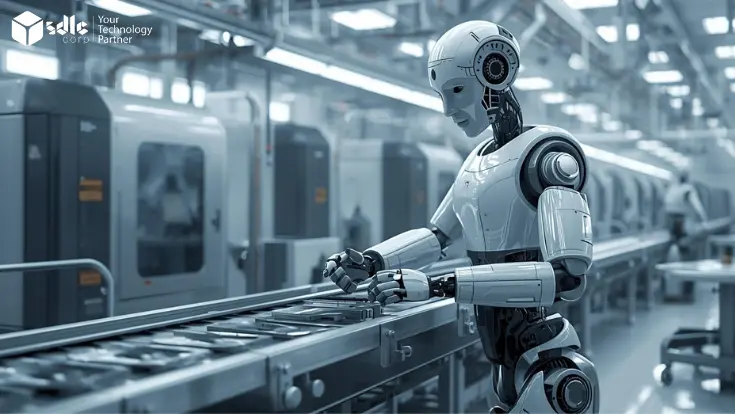Introduction
React has always been at the forefront of modern web development, enabling developers to build powerful and efficient user interfaces. With the release of React 18, a game-changing feature known as Concurrent Rendering was introduced, revolutionizing how applications handle updates and rendering. Whether you are a react js developer or part of a react js development company, understanding concurrent rendering is essential to leverage React 18 for enhanced performance, seamless interactivity, and improved user experience.
In this guide, we will demystify React 18 Concurrent Rendering in a simple, easy-to-understand manner. By the end, you’ll know exactly how it works, why it matters for modern react web development, and how to adopt it in your applications. Let’s get started!
What is Concurrent Rendering in React 18?
Concurrent Rendering is a new feature in React 18 that allows React to work on multiple tasks simultaneously without blocking the user interface. Traditionally, React processes updates synchronously, meaning one task must complete before the next begins. This can cause delays or slow interactions when heavy updates are rendered.
With Concurrent Rendering, React can pause ongoing updates, prioritize urgent tasks, and resume when resources are available. This ensures smoother interactions, even during complex updates or rendering processes. For example:
- While fetching data in the background, React can keep the UI interactive.
- User inputs (like typing in a form) remain responsive, even if heavy calculations are happening elsewhere.
In essence, Concurrent Rendering is not about making rendering faster but about making it non-blocking and smoother for the user.
Transform Ideas into ReactJS Solutions!
SDLC CORP delivers cutting-edge, user-friendly ReactJS applications.

How Does Concurrent Rendering Work?

Concurrent Rendering works through a mechanism that allows React to interrupt ongoing rendering when a higher-priority task comes in. React introduces an improved scheduling system that manages updates based on their priority levels.
Here’s a step-by-step breakdown:
- Interruptible Rendering – React begins rendering a component but can pause it at any point to focus on urgent updates.
- Resumable Work – React keeps track of where it paused, so it can resume rendering later without losing progress.
- Priority-based Scheduling – Tasks are classified as high, medium, or low priority. For example, user interactions (clicks, typing) are high priority, while background data fetching is lower priority.
- Automatic Batching – React groups multiple state updates together to minimize re-renders and improve performance.
This behavior ensures that applications remain snappy and responsive, even when managing large amounts of data or frequent updates.
Also check our latest blog : React Server Components: The Future of React Development
Key Benefits of Concurrent Rendering in React 18

1. Improved User Experience
Concurrent Rendering ensures that your application remains responsive, no matter how complex the updates are. For example, a react mobile app rendering large datasets won’t freeze or lag when a user interacts with the UI.
2. Automatic Batching
React 18 introduces Automatic Batching, which groups multiple state updates into a single render. Previously, multiple state updates would trigger separate re-renders. With automatic batching, React minimizes unnecessary renders and improves performance significantly.
Example Before React 18:
setCount(count + 1);
setName(“React”); // Two separate renders
Example in React 18:
setCount(count + 1);
setName(“React”); // Only one render
Automatic Batching is especially useful for developers working on large-scale react app development projects, as it optimizes resource usage.
3. Smoother Data Fetching
Concurrent Rendering works seamlessly with Suspense, React’s data-fetching feature. Suspense ensures that components display fallback content while fetching data, leading to a smooth and visually appealing user experience.
With Suspense, a react js development company can build applications where users no longer face blank screens while waiting for API responses.
4. Reduced Blocking of UI
React 18’s improved scheduling ensures that heavy updates (like large data visualizations or calculations) no longer block user interactions. For example, users can still scroll, click, or type while background tasks run uninterrupted.
Concurrent Rendering and React Features: What You Need to Know
1. Suspense for Data Fetching
Suspense plays a crucial role in Concurrent Rendering. With React 18, you can fetch data seamlessly without blocking the UI. Suspense allows components to display placeholders until data is fully loaded.
Example:
<Suspense fallback={<div>Loading…</div>}>
<MyComponent />
</Suspense>
Here, the <div>Loading…</div> placeholder is shown while MyComponent fetches its data.
2. Transition API
The Transition API allows you to mark state updates as non-urgent. For example, when navigating between pages, transitions can happen in the background without freezing the UI.
Example:
import { useTransition } from ‘react’;
const [isPending, startTransition] = useTransition();
startTransition(() => {
setPage(newPage);
});
This API ensures that updates like navigation or content filtering happen smoothly.
3. Automatic Batching
As discussed earlier, automatic batching reduces re-renders by combining multiple state updates. This significantly improves the efficiency of applications built using react software.
Build Modern Web Applications with ReactJS!
SDLC CORP ensures high-quality, responsive apps for all your business needs.

How to Adopt Concurrent Rendering in Your React Projects
To take advantage of Concurrent Rendering in React 18, follow these steps:
1. Upgrade to React 18
First, upgrade your project to React 18 by running the following command:
npm install react@18 react-dom@18
2. Update Your Root Rendering Code
Replace your existing ReactDOM render code with the new createRoot API:
import { createRoot } from ‘react-dom/client’;
import App from ‘./App’;
const container = document.getElementById(‘root’);
const root = createRoot(container);
root.render(<App />);
The createRoot API enables Concurrent Rendering.
Also check our latest blog : React 18: New Features You Need to Know About
3. Use Suspense for Data Fetching
Integrate Suspense for handling asynchronous data-fetching logic. This ensures smoother UI updates while loading data.
4. Use the Transition API
Mark non-urgent updates using the useTransition hook to prioritize user interactions over background work.
Why Concurrent Rendering is a Game-Changer for React Development
Concurrent Rendering in React 18 fundamentally changes how modern applications handle performance and responsiveness. For businesses relying on react website development and react development services, this means:
- Faster user interactions and seamless transitions.
- Optimized rendering for complex components.
- Reduced bottlenecks in resource-heavy applications.
From react app development to react mobile app solutions, React 18 sets a new standard for building responsive, high-performing interfaces.
Hire ReactJS Experts for Your Next Project!
Choose SDLC CORP for dynamic, responsive, and scalable ReactJS development.

Conclusion
React 18’s Concurrent Rendering is a major milestone that enhances performance, interactivity, and user experience. By allowing React to pause, resume, and prioritize tasks efficiently, developers can build applications that feel faster and more responsive.
For businesses offering react js development services or hiring a react js developer, adopting Concurrent Rendering is no longer optional—it’s essential for staying competitive in modern react web development. Whether you’re focused on building a react software, optimizing a react website development project, or creating high-performance react mobile apps, React 18 provides the tools to deliver exceptional user experiences.
Start upgrading your projects today to leverage the full power of Concurrent Rendering and ensure your applications perform at their best. With React 18, the future of react development is smoother, faster, and more efficient than ever.
SDLC CORP ReactJS Development Services Overview
SDLC CORP provides comprehensive react development services to create cutting-edge web and mobile applications that meet your business goals. Our team of skilled ReactJS developers specializes in crafting interactive user interfaces, robust architecture, and scalable solutions tailored to your specific requirements.
With a focus on innovation and efficiency, we utilize the latest ReactJS tools and libraries to ensure fast development, easy maintenance, and optimal performance. From single-page applications (SPAs) to enterprise-grade solutions, SDLC CORP delivers projects that are responsive, feature-rich, and future-ready. Trust us for seamless integration, on-time delivery, and a collaborative development process that aligns with your vision.

















